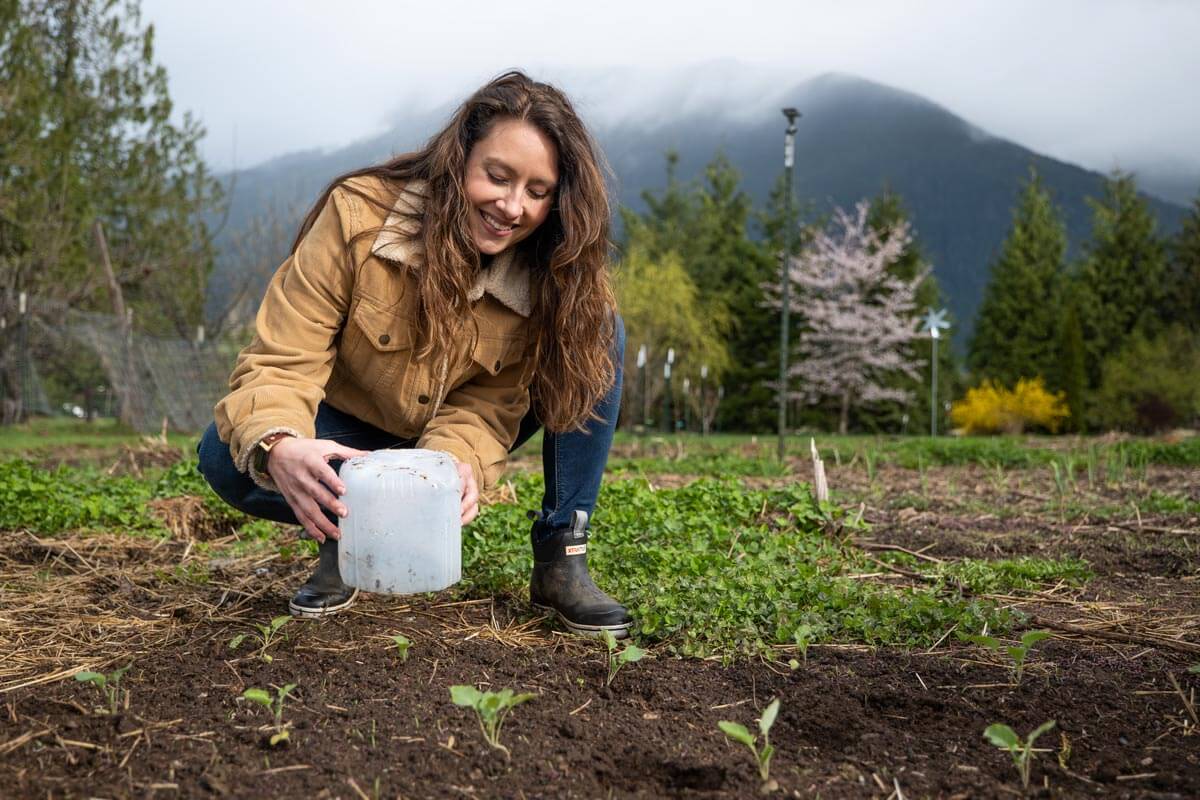These spring gardening tips will help you get a bigger harvest from your garden this year and will help save you some frustration in the future. I truly believe gardening and raising our own food should be as easy as possible.

Table of Contents[Hide][Show]
- When To Start
- Tip #1: Survey Your Property
- Tip #2 – Divide Perennials
- How to Divide Perennials
- Tip #3 – Move Fruit Trees and Bushes
- Tip #4 – Take Note of the Microclimates on Your Property
- Tip #5 – Evaluate Soil Drainage on Your Property
- Tip #6 – Move Frequently-Harvested Plants Closer to Home
- Tip #7 – Fertilize
- Tip #8 – Get Your Seeds Started
- More Posts You May Enjoy
When To Start
Mid-March is about the time of year when I really need to start gearing up for the upcoming growing season and preparing the garden for spring planting. Hopefully, I did my due diligence of putting the garden to bed in the fall, because that always saves time come spring.
Since I live in a colder climate here in the Pacific Northwest, March is when I start these tasks, but you may need to start them a bit earlier or a bit later, depending on your last frost date.
These tips I’m about to share with you are best done in the spring, before most of your plants begin to blossom and open up. So if most of your perennial plants, such as fruit trees, herbs and flowers, aren’t really in full-on growing mode yet but they’re just starting, then these tips are going to be really helpful for you!
Listen to the full podcast, Episode #172 Spring Gardening Tips to Increase Harvest Yield, of the Pioneering Today Podcast, where we don’t just inspire you, but give you the clear steps to create the homegrown garden, pantry, kitchen, and life you want for your family and homestead.
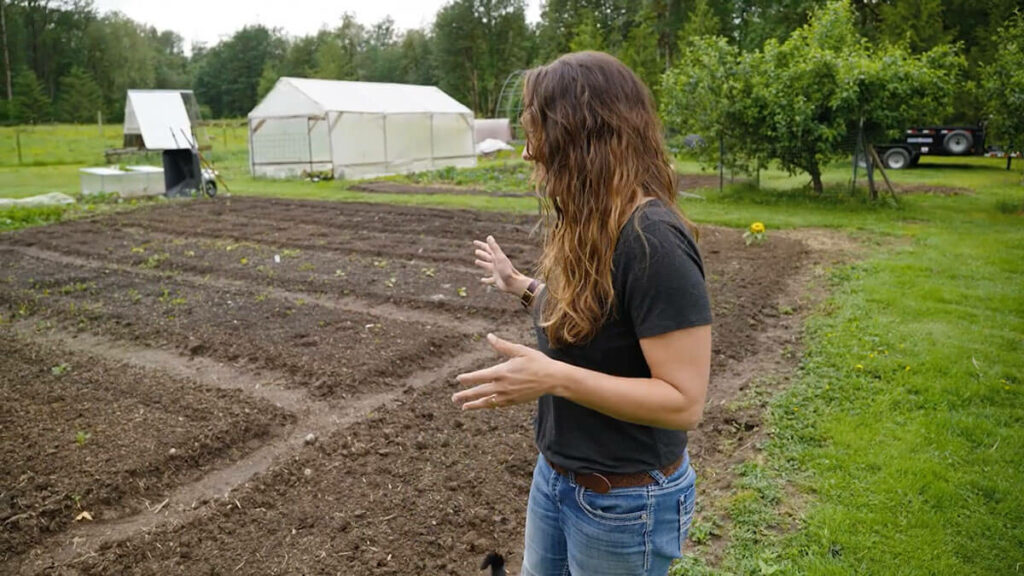
Tip #1: Survey Your Property
The first thing that I like to do is walk around and survey our property. I note where I’ve planted different things and evaluate how well each one is growing in its area.
I’ve made some mistakes in the past with our fruit trees, and we had to move them (which isn’t ideal), so now I’m a lot more cognizant of when and where I plant our perennials.
We planted elderberries a few years ago and have learned how to prune elderberry plants for maximum growth. I even learned how to propagate elderberry plants for essentially FREE plants!
Every few years, I expand our raspberry patch and plant new raspberries (you can learn how to properly prune raspberries here).
Our fruit trees are now in their permanent spot and are thriving thanks to our fruit tree guilds that keep them healthy. Although moving the trees set us back an entire growing season, we’d rather take that hit than not have them in their ideal location.
If you can do a thorough evaluation of your property before you plant perennials (especially fruit trees and bushes), you’ll be better off in the long run.
For more specific information on putting in fruit trees and growing an orchard on your homestead, and/or moving things around, check out podcast #169, Five Tips to Starting an Orchard and Growing Fruit on Your Homestead.
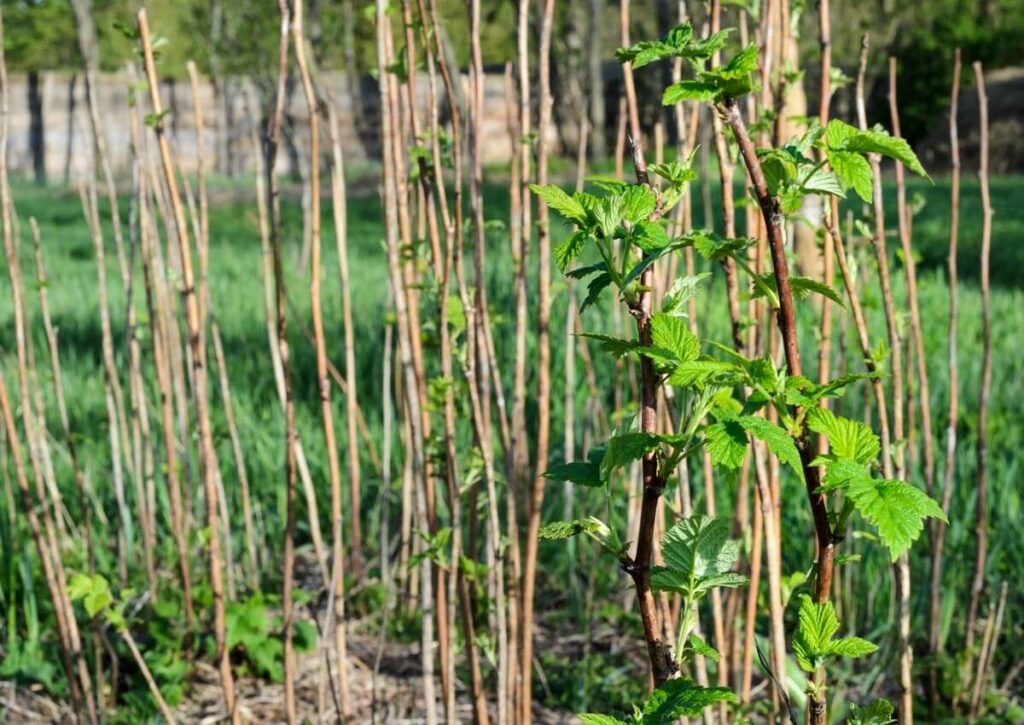
Tip #2 – Divide Perennials
Fall and early spring are the best times to divide perennial plants like herbs, raspberry canes, strawberries, etc. Right now I’m looking at dividing out my chives, for example.
Rhubarb is another perennial plant that multiplies as it grows, so you’ll need to divide your crowns. Eventually, they’ll just outgrow their area and take over places you never intended for them to be.
The best part about dividing plants is that you can either increase your own crop of that particular plant by taking what you’ve divided out and planting it in a new spot, or you can give them away to other people.
I love exchanging plants with friends and neighbors who are growing something I don’t yet have. Getting an established cutting from a perennial is much better than starting from seed.
Dividing perennials is an early spring gardening chore, ideally done before they’ve begun to leave dormancy (the raspberry photo above, for example, is too late to divide the plants; this needs to be done prior to them budding or leafing out).
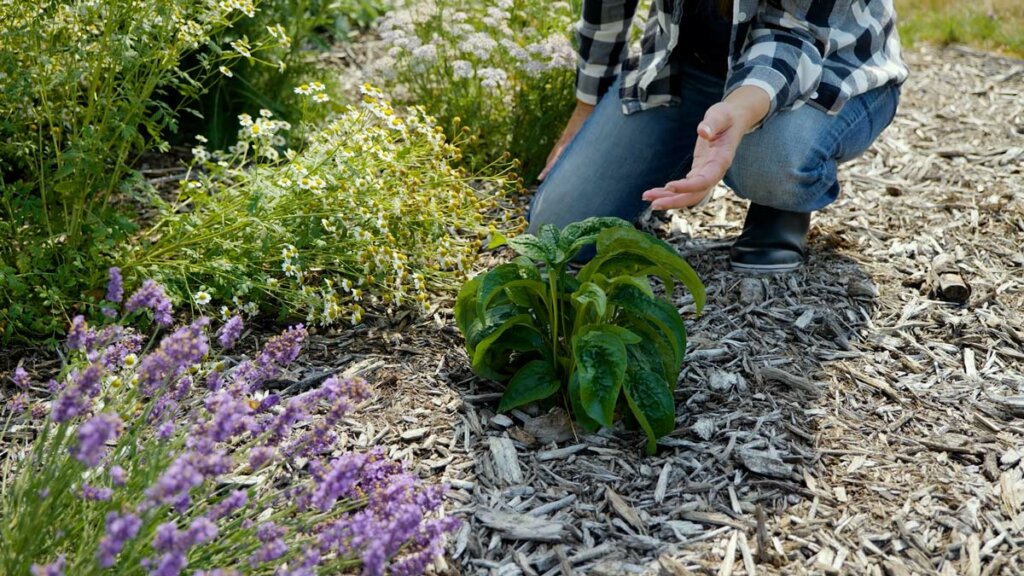
How to Divide Perennials
It’s pretty easy to divide your perennials. Here’s what to do:
- Start with a nice, sharp, pointed shovel or spade (depending on how big the plant is).
- Cut it in half, thirds, or even fourths (again, depending on how big it is), and do a nice, clean, even cut down and split it into two (or three, or four).
- You can replant those new divisions somewhere else, pot them, give them away or trade them with others in your community.
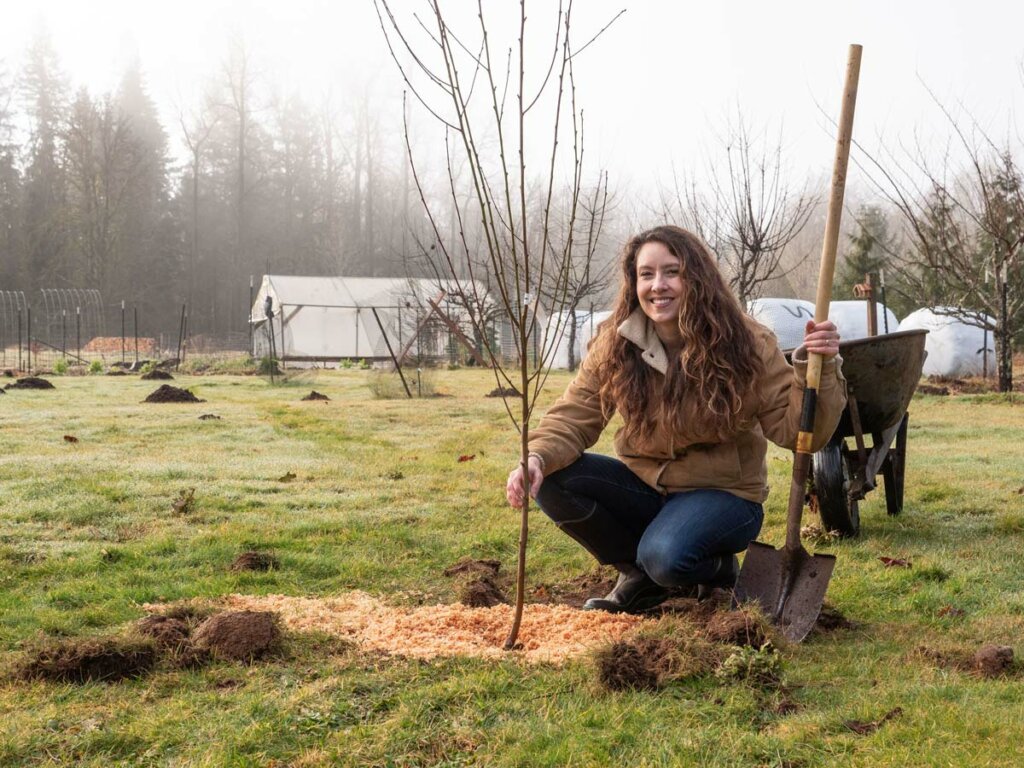
Tip #3 – Move Fruit Trees and Bushes
If you have any dormant bushes or trees, this is a good time to move them, before they start to leaf out and really get into that spring growing time.
Plant or move them when they’re still in their dormancy, and that’s before the buds open up and before green leaves start to appear.
Evaluate where things are and if they’re thriving where they are. If they’re thriving, leave them, but if you think they would grow better in a different spot, now is the time to do it.
As I mentioned, we needed to move some of our fruit trees and while it did set them back, I’m so thankful we chose to put them where they are now because I think they’ve not only grown more where they are, but they’ve also probably caught up and exceeded their growth had we left them.

Tip #4 – Take Note of the Microclimates on Your Property
This can also be a really good time of year to evaluate your yard and property when it comes to planting. Walk around and note the different microclimates or micro-zones that exist around your property.
Ask yourself: Where do you get the most shade? Where do you get full sun? Where does it stay cool or damp or hot or dry most of the time?
You especially want to evaluate and note where your warm pockets are. The best way I’ve found to do this is after you have a snowfall, go out and look and see where that snow melts first. Wherever it melts first, that is a warmer pocket or microclimate, so you know that you can put sun-loving plants there, and most of them will do well (think peppers, tomatoes, strawberries, herbs, etc.).
This is especially true for perennials you want to overwinter (especially if you live in a cold climate with the potential for lots of snow). For one, they will likely overwinter better in these warmer microclimates.
I have our rosemary plant tucked up against our back deck, and that’s always one of the very first places that the snow and/or the frost will melt, which means it stays warmer during the winter, which is really good for rosemary.
On the flip side, some summer annuals might do better in a cooler microclimate. Also, take note of where the snow is last to melt off. These are likely your cooler microclimates. If you’ve noticed any plants in the past that seemed to really struggle in the heat or a lot of sun, then try moving them to this cooler area.
Read this post for more information on microclimates and planning your garden location.
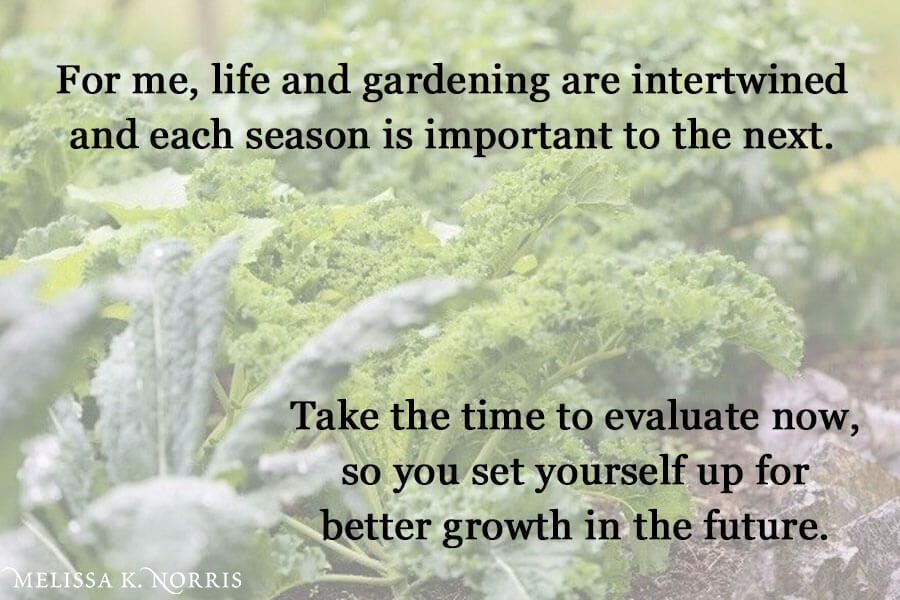
Tip #5 – Evaluate Soil Drainage on Your Property
Evaluate the way that the soil around your landscape drains. Take note of areas that are really soggy. Where does the water tend to settle and build up? Where is it pooling instead of draining?
While some plants need to stay wetter, others don’t like their roots wet (or as we gardeners say, they don’t like soggy feet!). Early spring is the perfect time of year for you to not just guess, but to really see where you get the best (and worst) drainage because of all that runoff water you get from those heavy spring rains and/or snow that is then melting.
Recognizing these areas early on gives you time to plan your crops and your garden beds accordingly.
Read up on covering your garden with woodchip mulch and amending the soil. You can also learn how to test the pH of your soil here.
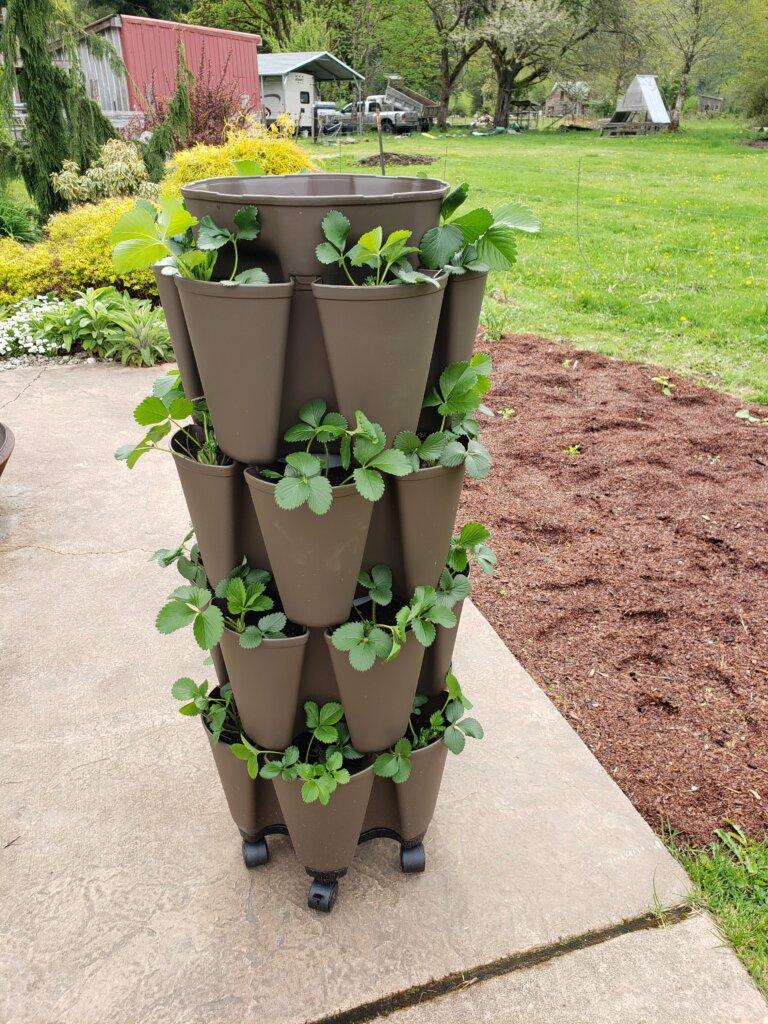
Tip #6 – Move Frequently-Harvested Plants Closer to Home
Another thing you might want to evaluate is the proximity of your plants to your house. When thinking about the permaculture zones, those you access the most should be the most convenient to harvest.
You can also consider what to plant them in, as well. Container gardening has come a long way and you don’t necessarily need a lot of land to grow a lot of food. I utilize vertical gardening methods to increase my growing space every year.
For example, I keep most of my herbs in containers by my back deck because some of them, like mint and sage, will spread like crazy if I put them in the ground or a larger garden bed. And I like to have them right next to my back deck because they’re herbs that I cook with frequently, so I can just run outside and grab them quickly.
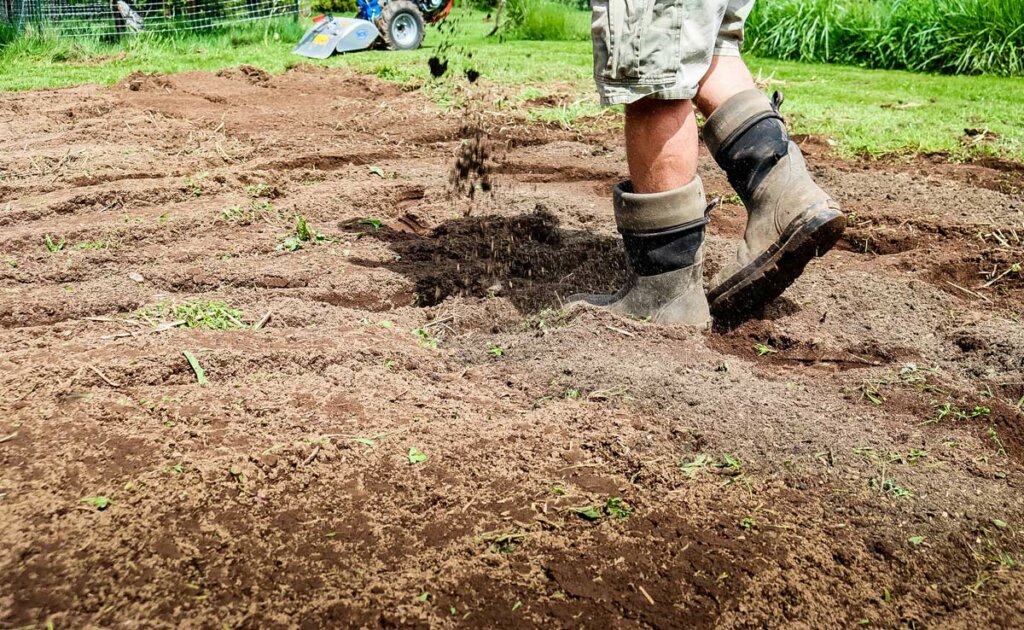
Tip #7 – Fertilize
Now is also the time to think about fertilizing.
Since container plants tend to stay in the same container with the same soil year after year, it’s important to add some nutrients into the soil in the spring to ensure your container plants stay healthy and productive.
You’ll want to wait until your container plants break their dormancy because that’s when they’re going to be hungry, and you want them to stay in their dormant phase until the weather is appropriate for them to come out of it. Once you start to see things turning green and buds opening up, that’s the time to get your containers fertilized.
To fertilize, you can put some aged and ready compost on top of the soil and work that into the top layer. I also like to use a liquid fish fertilizer, which I use with the majority of my containers, and then I save our manure and our big compost pile for our berry plants and for out in the garden.
Also, remember when you’re fertilizing, if you’re using manure on anything, if it’s an above-ground crop, you want to make sure that you have enough “buffer” days before you are going to be harvesting when you’re putting fresh manure on your soil.
For example, I wouldn’t want to put down a whole bunch of fresh manure and then, in about 30 days, start harvesting and eating my plants because that manure won’t have broken down yet, and there could be traces of it on the plants that I’m eating. Needless to say, it’s a good idea to have that buffer time in there for it to break down enough and into the soil before you’re harvesting directly from it.
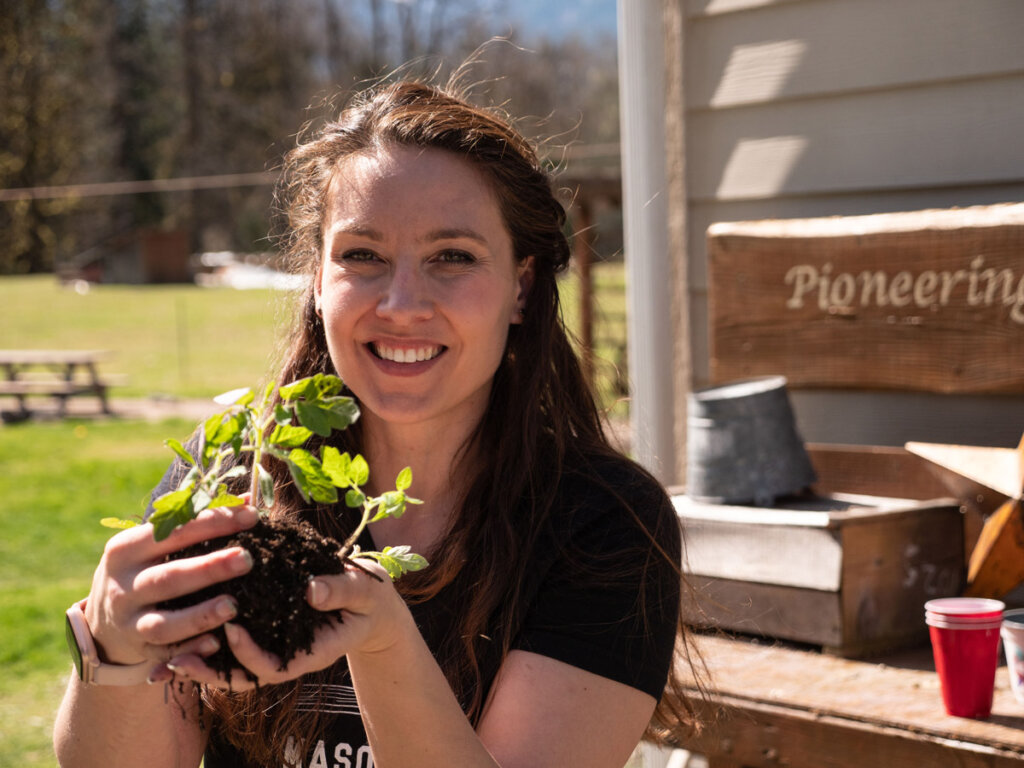
Tip #8 – Get Your Seeds Started
If you haven’t started your seeds yet, there’s still time. Your seed starting window will depend on the crops you’re planting and your last average frost date.
You’ve got cool-weather crops that can go out a few weeks before that last average frost date, and then you’ve got warm-weather crops that need to be a couple of weeks past any danger of frost so that they can make it outside.
So when exactly you start your seeds will depend on the crop, your gardening zone, and the last frost date. But this is the time of year to get those seeds started, so don’t wait!
For more information on starting seeds, you can check out Episode #130 – The Ultimate Seed Starting Guide: Planning, Starting and Mistakes Avoid.
In the meantime, take some time to evaluate your garden, enjoy the warmer spring weather and start planning for an abundant harvest this year!
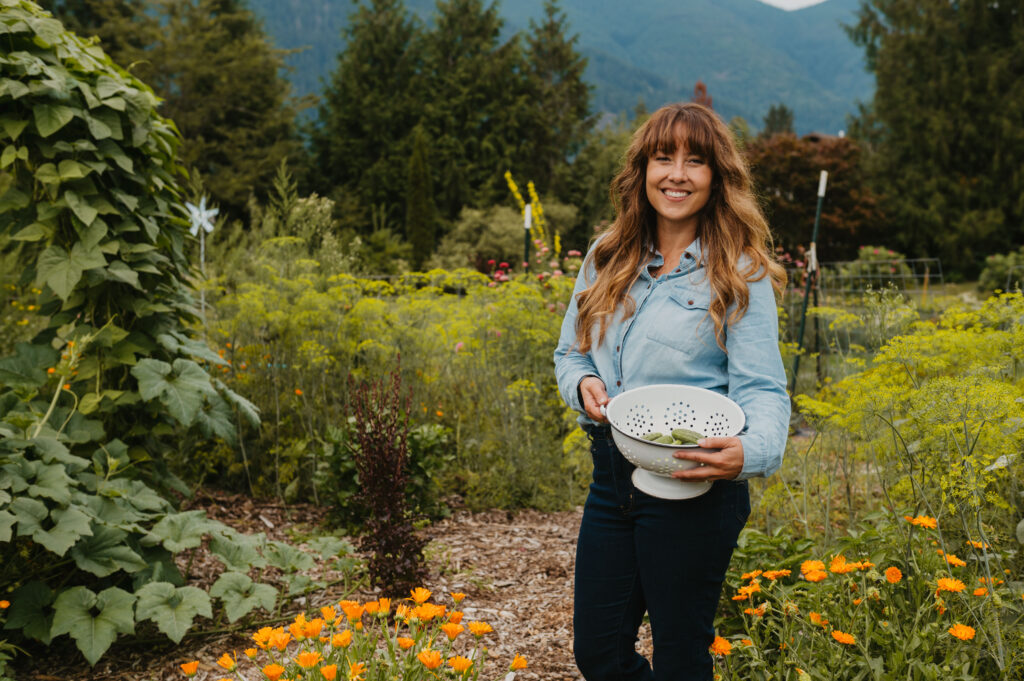
More Posts You May Enjoy
- Small Space Vegetable Gardening: Urban Gardening Tips
- Raised Bed Gardening Tips – 9 Things You Need to Know
- Hot Climate Gardening Tips
- Grow More Food Next Year with These 5 Fall Gardening Tips
- Fall Gardening Prep: 11 Tips to Improve Your Soil
- 3 Tips for Planning Gardening Success in Winter
- Time Saving Gardening Tips
- How to Improve Soil for Gardening – 3 Easy Tips
